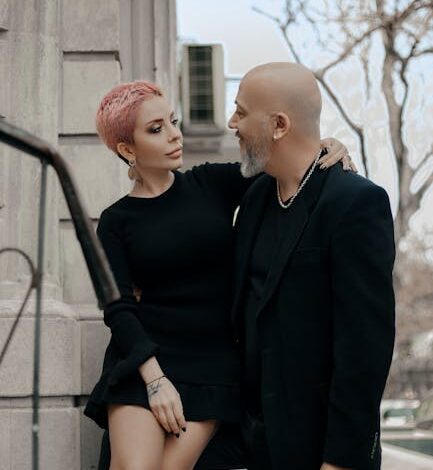Public Relations: Best Practices And Applications Pdf Free Download

So, you’re interested in learning about public relations (PR) and maybe even finding a free PDF to download? You’ve come to the right place! Think of me as your friendly neighborhood PR guide. I’m not going to sell you anything, just give you some solid info and point you in the right direction.
Public Relations can seem a bit mysterious, but at its heart, it’s about building relationships. It’s how organizations – whether they’re huge corporations, small businesses, non-profits, or even individuals – manage how the public sees them. It’s about shaping a positive image, handling tricky situations, and communicating effectively with the world.

What Does Public Relations Actually Do?
PR is way more than just writing press releases (though that’s part of it!). Here’s a glimpse into some key areas:
* **Media Relations:** This is what most people think of. It involves working with journalists, bloggers, and other media outlets to get positive coverage for your organization. Think of it as earning attention, not buying it like advertising.
* **Crisis Communication:** When something goes wrong – and eventually, it usually does – PR professionals step in to manage the situation, communicate honestly, and protect the organization’s reputation.
* **Internal Communications:** It’s not just about the outside world! PR also focuses on communicating effectively with employees, making sure everyone is on the same page and feels valued.
* **Community Relations:** Building relationships with the local community is crucial, especially for businesses. This could involve sponsoring local events, volunteering, or simply being a good neighbor.
* **Content Creation:** PR pros are storytellers. They create engaging content like blog posts, social media updates, videos, and infographics to share the organization’s message and connect with their audience.
* **Social Media Management:** In today’s world, social media is a vital PR tool. It’s a way to connect directly with your audience, build relationships, and manage your online reputation.
PR Best Practices: A Few Tips to Get You Started
Whether you’re a seasoned pro or just starting out, here are some essential PR best practices to keep in mind:
* **Know Your Audience:** Who are you trying to reach? What are their interests and concerns? Tailor your message to resonate with them.
* **Be Authentic and Transparent:** Honesty is always the best policy. Don’t try to hide mistakes or mislead people. Build trust by being genuine.
* **Tell a Compelling Story:** People are drawn to stories. Find the human angle and make your message memorable.
* **Build Relationships:** PR is all about relationships. Cultivate connections with journalists, bloggers, influencers, and other key stakeholders.
* **Be Proactive, Not Reactive:** Don’t wait for a crisis to start communicating. Regularly share positive stories and engage with your audience.
* **Measure Your Results:** Track your PR efforts to see what’s working and what’s not. Use data to inform your strategy and improve your results.
* **Be Prepared for Anything:** Have a crisis communication plan in place so you’re ready to respond quickly and effectively to any situation.
Applications of Public Relations
PR isn’t just for big corporations. It can be used in a variety of settings:
* **Businesses:** To build brand awareness, attract customers, and manage their reputation.
* **Non-profits:** To raise awareness of their cause, attract donors, and recruit volunteers.
* **Government agencies:** To inform the public about their programs and services and build trust.
* **Individuals:** To build their personal brand, advance their career, or promote their work.
Finding Free PR Resources (Including PDFs)
Okay, let’s talk about finding that free PDF you were looking for. While I can’t directly provide a download link (offering copyrighted material would be unethical!), I can give you some great places to look:
* **University Websites:** Many universities with communications or public relations programs offer free resources, white papers, and sometimes even excerpts from textbooks. Search for “[university name] public relations resources.”
* **Professional Organizations:** Organizations like the Public Relations Society of America (PRSA) often have free guides and articles available on their websites. While full books are rarely free, they provide valuable insights.
* **Marketing and PR Blogs:** Many marketing and PR blogs offer free ebooks and guides in exchange for your email address. This can be a great way to get valuable information and stay up-to-date on the latest trends. Just be aware you might be added to their mailing list.
* **Google Scholar:** Search for academic papers and research on public relations. Some authors make their work freely available.
* **Open Educational Resources (OER):** These are educational materials that are freely available for anyone to use. Search for OER resources on public relations.
* **Your Local Library:** Don’t forget the library! They have tons of books on public relations, and it’s all free with your library card.
Instead of focusing solely on finding a single PDF, consider gathering information from multiple sources. This will give you a more well-rounded understanding of public relations.
Safety Tips When Downloading Files
A quick word of caution: Be careful when downloading files from the internet. Only download from trusted sources to avoid viruses and malware. Make sure your antivirus software is up-to-date, and scan any downloaded files before opening them.
Frequently Asked Questions (FAQ)
What are the key skills needed for a career in PR?
Strong communication skills (both written and verbal), creativity, problem-solving abilities, media savvy, and the ability to build relationships are all essential for success in PR.
How is PR different from advertising?
Advertising is paid for, while PR is earned. Advertising involves directly promoting a product or service, while PR focuses on building relationships and shaping public perception.
What’s the role of social media in PR?
Social media is a powerful tool for PR. It allows you to connect directly with your audience, build relationships, manage your reputation, and share your message in a timely and engaging way.
How can I measure the success of my PR efforts?
You can track media mentions, website traffic, social media engagement, brand sentiment, and other metrics to measure the effectiveness of your PR campaigns.
Is a degree in public relations necessary to work in the field?
While a degree in public relations, communications, or a related field can be helpful, it’s not always required. Experience, skills, and a strong portfolio are also important.
Hopefully, this guide has given you a better understanding of public relations and pointed you in the right direction for finding resources to learn more. Remember, building relationships, telling compelling stories, and communicating effectively are key to success in PR. Good luck!
Related Posts
| Read Public Relations: Best Practices And Applications Online Free |